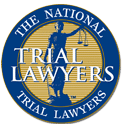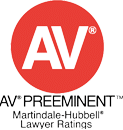Ohio Truck Accident Help
A Division of Ohio Truck Accident
Truck Crashes Are Different. So Is Ohio Truck Accident Help.
Free Consultations // Available 24/7 // Board Certified “Truck” Accident/”Trial” Attorneys
“I’m somebody and not just a number. I would not hesitate to recommend anyone to retain Ohio Truck Accident Help for their personal injury needs. Thanks for all of your help.”
ON THIS PAGE:
Ohio Truck Accident Help: Terms to Know
Understanding key terms can help you make informed decisions after a collision with a commercial truck. This glossary breaks down the language used in Ohio truck accident investigations, insurance claims, and lawsuits.
The Ohio truck accident attorneys with Ohio Truck Accident Help created this guide to promote trust, authority, and clarity for victims seeking reliable legal information about truck accident claims. For questions about your case, contact our Ohio truck accident lawyers for a free evaluation.
Accident reconstruction experts use physical evidence, crash data, and roadway analysis to determine how a truck accident occurred. In Ohio, reconstruction specialists follow standards from the National Highway Traffic Safety Administration and may testify in court to explain impact speed, direction, and fault.
An Administrative License Suspension occurs when a commercial driver’s license is suspended following a failed or refused chemical test. Under Ohio law, the Bureau of Motor Vehicles imposes an immediate ALS after an OVI arrest, even before the criminal case concludes.
Truck drivers must adjust speed and following distance for rain, fog, snow, or ice. Failure to adapt to conditions violates Ohio’s “reasonable care” negligence standard and may result in liability for weather-related crashes.
Aggressive driving includes tailgating, abrupt lane changes, or speeding. Ohio Revised Code §4511.20 prohibits operating a vehicle with “willful or wanton disregard for safety.” When a truck driver’s actions meet this standard, fault is often clear.
Commercial trucks use air brake systems rather than hydraulic ones. Poor maintenance, worn components, or failed inspections can cause brake failure. The Federal Motor Carrier Safety Administration (FMCSA) requires regular brake inspections under 49 CFR Part 396.
Following serious truck crashes, drivers must undergo alcohol and drug testing under 49 CFR §382.303. Employers must remove any driver testing positive and comply with both FMCSA and Ohio Department of Transportation regulations.
AEB systems automatically apply brakes when they detect an impending collision. When these systems malfunction or fail to engage, it may create a product liability or negligence claim under Ohio law.
Ohio enforces axle and gross vehicle weight limits under ORC §5577.04. Exceeding these limits can make a carrier liable for road damage, instability, and loss of control, leading to an accident.
A bill of lading is a shipping contract between a shipper and carrier that outlines who is responsible for cargo during transport. This document helps attorneys trace liability in truck accident cases involving cargo damage or load loss.
Most modern trucks include an Electronic Control Module (ECM) or “black box” that records data such as speed, braking, and throttle position. Truck accident lawyers use this information to determine fault and timing of key events before impact.
Trucks have large blind spots—called “No-Zones”—along both sides, behind, and in front of the trailer. When a driver fails to check these zones before merging or turning, it can lead to devastating collisions with smaller vehicles.
Brake failure is often linked to negligent maintenance, defective components, or overloading. Ohio law requires carriers and maintenance providers to keep braking systems in safe condition or face liability when accidents occur.
Freight brokers coordinate shipments between shippers and carriers. Courts may hold a broker liable if they negligently hire an unsafe or unlicensed carrier, violating FMCSA safety requirements.
When defective couplings, tires, or lights contribute to a crash, both maintenance providers and manufacturers may share liability. Documentation such as repair logs and inspection reports often supports these claims.
These rear-end accidents commonly occur when truck drivers follow too closely. Under ORC §4511.34, drivers must maintain sufficient distance to prevent collisions.
Fuel-fed fires and explosions following truck crashes can cause severe burns requiring surgery and long-term care. Victims may seek compensation for medical costs and emotional trauma caused by another party’s negligence.
Bus and truck drivers share similar safety obligations under both FMCSA and Ohio law. Liability may depend on ownership (public vs. private), the driver’s employment status, and adherence to transportation regulations.
Under 49 CFR §393.100–136, all cargo must be properly tied down and balanced. Violations of these FMCSA rules or Ohio’s cargo securement statutes can prove negligence in a truck accident case.
The FMCSA assigns carriers safety ratings based on compliance, inspection results, and crash history. Poor ratings may serve as evidence of negligent hiring or oversight in Ohio truck accident lawsuits.
Truck crashes often cause catastrophic injuries such as spinal cord damage, traumatic brain injuries, and amputations. Ohio personal injury law allows recovery for long-term disability, loss of earning capacity, and emotional distress.
A CDL is required to operate vehicles weighing over 26,001 pounds or carrying hazardous materials. Licensing standards are governed by 49 CFR Part 383 and enforced by the Ohio BMV.
Truck accident cases often involve multiple liable parties, including the driver, carrier, broker, and shipper. Ohio courts evaluate contracts and control levels to determine which parties share fault.
Under Ohio Revised Code §2315.33, accident victims can recover compensation as long as they are not more than 50% at fault. Awards are reduced by the victim’s percentage of responsibility.
Compensatory damages reimburse victims for losses such as medical costs, lost income, and pain and suffering. They are designed to restore the victim to their pre-accident condition as much as possible.
Most Ohio truck accident attorneys handle cases on a contingency fee basis, meaning clients pay no attorney fees unless a settlement or verdict is won.
The Ohio Department of Public Safety (ODPS) maintains standardized crash reports containing diagrams, citations, and officer observations. These reports are key in determining fault and supporting insurance claims.
Experts use physics-based formulas to calculate a vehicle’s speed prior to skidding or rollover. This data often supports causation testimony in Ohio civil courts.
Dashcams record real-time footage of road events. In truck accident investigations, dashcam evidence helps confirm traffic light timing, driver behavior, or lane positions at impact.
A “deadhead” occurs when a truck returns empty after a delivery. These trips can affect handling, braking, and weight distribution, sometimes increasing accident risks.
Every interstate carrier must display a valid U.S. DOT number assigned by the FMCSA. Checking this number helps verify a company’s registration, safety rating, and insurance coverage.
Distracted driving, such as texting, using a GPS, or eating behind the wheel remains a top cause of Ohio truck crashes. Under the state’s updated hands-free law, police can now stop drivers solely for phone use, and violations can help establish negligence in civil cases.
Driver fatigue is one of the most common causes of truck accidents. The FMCSA Hours-of-Service (HOS) regulations limit how long drivers can operate before resting. When truckers or companies ignore these limits, liability for resulting accidents often follows.
Carriers must maintain a DQF for every commercial driver, containing their driving record, employment history, medical certification, and drug testing results. Missing or incomplete files can strengthen claims of negligent hiring or supervision.
Under Ohio negligence law, all drivers owe a duty to operate safely and obey traffic regulations. Trucking companies have an additional duty to ensure that drivers are trained, supervised, and compliant with federal safety rules.
Driving under the influence of alcohol or drugs violates Ohio Revised Code §4511.19. Truck drivers face stricter blood alcohol limits and risk federal disqualification from operating commercial vehicles.
ELDs record engine hours, vehicle movement, and driving time to ensure compliance with HOS regulations. In many Ohio truck crash cases, ELD data serves as crucial evidence proving fatigue or falsified logs.
Employers may be held responsible for their drivers’ negligence if the accident occurred while performing work-related duties. This legal doctrine—known as respondeat superior—is frequently applied in Ohio trucking lawsuits.
Defective or poorly maintained components like brakes, tires, or couplings can cause catastrophic crashes. Carriers and maintenance contractors must comply with FMCSA inspection and repair rules, and failure to do so can establish liability.
Preserving key evidence such as black box data, driver logs, and photos is essential after a crash. Ohio law allows courts to impose penalties for spoliation of evidence if a party intentionally destroys or alters proof.
Expert witnesses engineers, medical professionals, and accident reconstructionists—help explain complex facts to juries. Their testimony is admissible in Ohio courts under Evidence Rule 702.








Truck drivers who fail to yield at intersections or merge unsafely can be found negligent under ORC §4511.43. Police diagrams and witness statements often confirm who had the right of way.
Determining fault involves reviewing police reports, ECM data, and witness testimony. Under Ohio’s comparative negligence system, multiple parties may share responsibility for a crash.
The FMCSA regulates commercial transportation nationwide, setting rules for driver hours, licensing, and maintenance. Its Safety and Fitness Electronic Records (SAFER) database helps identify negligent carriers.
Gross negligence involves reckless disregard for the safety of others. Under Ohio Revised Code §2315.21, victims may seek punitive damages for such conduct.
HazMat trucks must meet both FMCSA and PUCO standards. Spills or explosions caused by noncompliance can result in severe injuries and environmental liability.
Head-on truck crashes often cause catastrophic or fatal injuries. These cases usually involve lane departures, fatigue, or distraction, requiring reconstruction and fault analysis.
HOS rules limit the number of hours commercial drivers can operate without rest. Violations of these federal limits can demonstrate fatigue and negligence in Ohio lawsuits.
Independent contractors, or “owner-operators,” own their rigs but may still expose carriers to liability if the company controls dispatching or safety operations. Ohio courts examine contracts and actual control when assigning responsibility.
Insurance adjusters evaluate claims for trucking insurers. Victims should avoid giving recorded statements before consulting an Ohio truck accident lawyer, as insurers often seek to minimize payouts.
A jackknife occurs when the trailer swings out from the cab, forming a V-shape. Contributing causes include sudden braking, speed, or slippery roads. These crashes often cause multi-vehicle pileups.
Federal regulations require carriers to maintain at least $750,000 in liability coverage, with higher limits for hazardous cargo. Insurance disclosures help attorneys locate available compensation sources.
Improperly secured or unevenly distributed cargo can shift in transit, causing rollovers or lane departures. Load securement violations under 49 CFR §393.100 can establish negligence per se.
Falsifying or omitting log entries violates FMCSA HOS rules. Ohio investigators often compare logbooks with ELD data to uncover fatigue or noncompliance.
Maintenance logs document inspections and repairs. Missing or outdated records may indicate negligent upkeep, especially in cases involving brake or tire failure.
Mediation is a confidential negotiation process led by a neutral third party. Ohio courts often encourage mediation before trial to promote fair settlements.
Some Ohio insurance policies include MedPay, which covers medical expenses regardless of fault. It provides quick relief while liability investigations continue.
Chain-reaction crashes involving multiple vehicles can make fault complex. Reconstruction experts analyze each vehicle’s movement to assign comparative negligence.
Crashes involving city- or county-owned trucks fall under Ohio’s Political Subdivision Tort Liability Act. Strict notice and filing requirements apply.
Ohio Truck Accident Help is dedicated to helping you achieve financial stability and recovery. We’re compassionate about what you endured and practical about your needs after a truck accident.
Testimonials
"somebody and not just a number. I would not hesitate to recommend anyone to retain Ohio Truck Accident Help for their personal injury needs. Thanks for all of your help."
Case Result
Lake County Pedestrian Fatality
Case Result
Stark County Failure-to-Yield
Carriers must vet and monitor their drivers’ qualifications. Hiring unqualified or unsafe drivers can result in direct negligence claims against the company.
Carriers operating across state lines must register with the FMCSA and comply with Ohio’s trucking regulations when driving within state borders.
Police reports document vehicle positions, damage, citations, and officer observations. You can request a copy from the ODPS Crash Report Portal.
When defective brakes, tires, or mechanical systems cause crashes, manufacturers or distributors may be liable under Ohio Product Liability Law.
Top-heavy trucks are prone to rollovers on curves or during sudden turns. These crashes often stem from speeding, overloading, or improper cargo balance.
New carriers undergo FMCSA safety audits to evaluate compliance. Failed audits can demonstrate negligent management or systemic violations in later accident claims.
A settlement resolves a truck accident claim through negotiation rather than trial. Your attorney ensures all damages—medical, financial, and emotional—are fully valued before agreement.
When evidence is destroyed or withheld, courts may impose sanctions or instruct juries to assume it was unfavorable. Preserving data immediately after a crash is critical.
Under Ohio Revised Code §2305.10, most truck accident victims have two years from the crash date to file a personal injury claim.
After paying benefits, an insurer can seek reimbursement from the at-fault party. Subrogation ensures victims are not compensated twice for the same loss.
An underride crash occurs when a smaller vehicle slides beneath a truck’s trailer. Federal law requires underride guards to reduce the risk of fatal injuries.
Vicarious liability holds employers responsible for employees’ negligence committed during work duties, even if the employer did not act negligently themselves.
Skipping weigh stations or exceeding axle limits can result in citations and serve as evidence of negligent operation or overloading.
Witnesses provide essential accounts of how the crash occurred. Their statements, along with dashcam or ECM data, help reconstruct events accurately.
Families of truck accident victims can pursue wrongful death claims under ORC §2125.02 for loss of support, companionship, and funeral expenses.
Failing to yield while merging or entering an intersection is a frequent cause of truck accidents. Under ORC §4511.44, drivers must yield to oncoming traffic to avoid collisions.
Truck accidents change lives in seconds. You deserve answers, accountability, and fair compensation under Ohio law. At Ohio Truck Accident Help, our experienced attorneys investigate truck crashes statewide and fight to protect your rights.